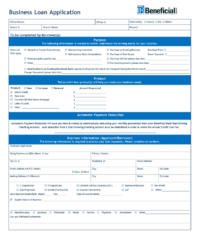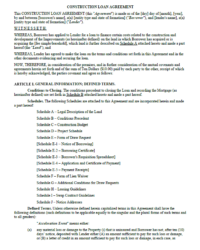Utilizing such a framework offers several advantages. It saves time and effort by providing a clear structure to follow, reducing the likelihood of omissions. A well-organized application can also present a more professional image to potential lenders, increasing the chances of approval. Furthermore, it can help businesses thoroughly assess their financial needs and preparedness before formally requesting funding.
This foundation of a well-prepared application is crucial for securing necessary capital. The following sections will delve deeper into specific components, offering practical guidance and best practices for completing each section effectively.
Key Components of a Loan Application
A comprehensive application typically includes several key components, each designed to provide lenders with a complete understanding of the business and its financial needs.
1. Executive Summary: This section provides a concise overview of the business, its purpose, and the loan request. It should clearly state the amount requested and the intended use of funds.
2. Company Description: This section details the business’s legal structure, ownership, history, and primary operations. Information on products or services offered, target market, and competitive landscape are typically included.
3. Management Team: This section outlines the experience and expertise of key personnel, demonstrating their ability to manage the business and repay the loan. Resumes or brief biographies may be included.
4. Financial Information: This section provides historical and projected financial statements, including income statements, balance sheets, and cash flow projections. Supporting documentation, such as tax returns, may also be required.
5. Loan Request and Purpose: This section specifies the loan amount, term, and repayment schedule. It should clearly articulate how the funds will be used and how they will contribute to the business’s growth and profitability.
6. Use of Funds: This component provides a detailed breakdown of how the loan proceeds will be allocated, such as equipment purchases, working capital, or marketing initiatives.
7. Repayment Plan: This section outlines the proposed repayment schedule, demonstrating the business’s ability to meet its debt obligations based on projected cash flow and revenue.
Providing complete and accurate information in each of these areas increases the likelihood of loan approval and fosters a transparent and productive relationship with potential lenders. This detailed overview allows lenders to assess risk and make informed decisions regarding the financing request.
How to Create a Business Loan Application
Developing a robust application requires careful planning and attention to detail. A well-structured document increases the likelihood of securing necessary funding.
1. Define the Purpose: Clearly articulate the reason for the loan and how the funds will be utilized. Specificity is crucial. Detail precisely how the capital will contribute to business growth or address financial needs.
2. Gather Financial Documentation: Compile all necessary financial records, including historical and projected financial statements (income statements, balance sheets, cash flow statements), tax returns, and bank statements. Accurate and comprehensive financial data is essential for demonstrating creditworthiness.
3. Draft the Executive Summary: Provide a concise and compelling overview of the business, its purpose, and the loan request. This section should clearly state the amount requested, the intended use of funds, and key highlights of the business plan.
4. Detail the Company Description: Provide a thorough description of the business, its legal structure, ownership, history, and operations. Include information on products or services offered, target market, competitive landscape, and management team experience.
5. Outline the Use of Funds: Specifically describe how the loan proceeds will be allocated. Provide a detailed breakdown of planned expenditures, such as equipment purchases, working capital investments, marketing campaigns, or debt consolidation.
6. Develop a Repayment Plan: Present a realistic and achievable repayment schedule, demonstrating the ability to meet debt obligations. This plan should be based on projected cash flow and revenue, demonstrating financial stability and responsible borrowing practices.
7. Review and Refine: Before submission, thoroughly review the application for completeness, accuracy, and clarity. Ensure all required information is included and presented in a professional and organized manner. Consider seeking feedback from financial advisors or mentors to strengthen the application further.
A meticulously crafted application demonstrates preparedness and professionalism, increasing the likelihood of securing funding and establishing a positive relationship with lenders.
A well-crafted framework for requesting financing serves as a crucial tool for businesses seeking capital. It provides a structured approach to presenting essential information to lenders, ensuring completeness and consistency throughout the application process. This meticulous preparation allows lenders to efficiently assess the business’s financial health, the intended use of funds, and the feasibility of repayment plans, ultimately increasing the likelihood of approval. A strong application reflects not only the financial needs of the business but also its organizational proficiency and commitment to responsible financial management.
Securing funding is often a pivotal step in business development and expansion. Utilizing a robust and comprehensive framework provides a significant advantage in this critical process. Thorough preparation, accurate information, and a clear articulation of business goals contribute significantly to a successful outcome. The ability to secure necessary capital can be transformative, enabling businesses to invest in growth, navigate challenges, and ultimately achieve their long-term objectives.


